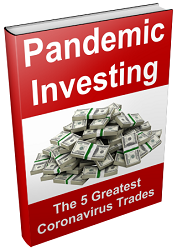Italy’s coronavirus outbreak spread south on Tuesday to Tuscany and Sicily, as the civil protection agency reported a surge in the number of infected people and Rome convened emergency talks. Prime Minister Giuseppe Conte has blamed poor management in a hospital in the country’s north for the outbreak, which has caused seven deaths in Italy so far and infected the largest number of people in Europe. Tuscany reported its first two cases, including one in the tourist destination of Florence, while Sicily recorded one: a tourist from the worst-hit Lombardy region, where 212 people have tested positive. The Liguria region, known as the Italian Riviera, also reported its first case, but cautioned that the definitive result for the 70-year old still needed to come from Italy’s infectious diseases institute. Health ministers from neighbouring countries were to meet in Rome as the number of confirmed infections jumped to 283, with over 50 new cases reported since Monday. News of the spike in cases came as a team from the World Health Organization in Rome said Italy had taken appropriate measures to curb the virus’s spread, with the focus on halting further person-to-person transmission. “The measures taken by the Italian government or the regional governments have been pretty strong and most likely should help in containing this virus as good as possible,” WHO spokesman Christian Lindmeier said. Lindmeier noted that based on current data, in the majority of cases – four out of every five – people experience mild or no symptoms. On Tuesday, several neighbouring countries reported their first confirmed infections. Croatia confirmed the first case in the Balkans region after a young man who recently returned from Italy – which lies across the Adriatic from Croatia – was found to have become infected. Switzerland reported its first confirmed case in the Italian-speaking Ticino canton, while Austria also saw its first two cases confirmed on Tuesday in the Tyrol province, which borders Italy. Austrian officials said one of the two patients was from Lombardy, but it was not yet clear how the person had contracted the virus. Meanwhile in the Canary Islands, hundreds of people were confined to their rooms in a Tenerife hotel after an Italian tourist was hospitalised with suspected coronavirus, health officials said. While no neighbouring country has closed its borders with Italy, several governments have announced additional measures for incoming travellers, in particular from the two northern regions of Lombardy and Veneto. They range from medical screening to special gates at airports and recommendations to self-isolate. Conte insisted however that Italy’s health protocols were “among the most rigorous” and warned it would be “unfair” for other countries to attempt to limit the movement of Italians, saying, “we wouldn’t be able to accept that.” He said it was safe for Italians to travel, both for them and for others. Wide-ranging measures to halt the spread of the virus have affected tens of millions of people in the north of Italy, with schools closed and cultural and sporting events cancelled. Several upcoming football matches in Italian Serie A and the Europa League will be played behind closed doors and production of the latest “Mission: Impossible” film starring Tom Cruise in Venice has also been stopped. The main centre of infection in Italy has been the town of Codogno, a town of some 15,000 people around 60 kilometres (35 miles) to the south of Milan. Codogno and several other towns in northern Italy have been put under isolation. A 38-year-old man, dubbed “Patient One” by Italian media, was admitted to hospital last Wednesday in Codogno, and it is thought a large number of the cases in the worst-hit region of Lombardy can be traced back to him. His heavily pregnant wife, several doctors, staff and patients at the hospital are thought to have caught the virus from him. Elsewhere in the country officials have also been recommending precautionary measures, even in areas without known infections. To avoid physical contact, bishops in the southern Calabria region have asked their worshippers not to make the sign of peace during mass, media reported. All seven of those who have died so far in Italy were either elderly or had pre-existing medical conditions.
(FRANCE 24 with AFP, REUTERS)



